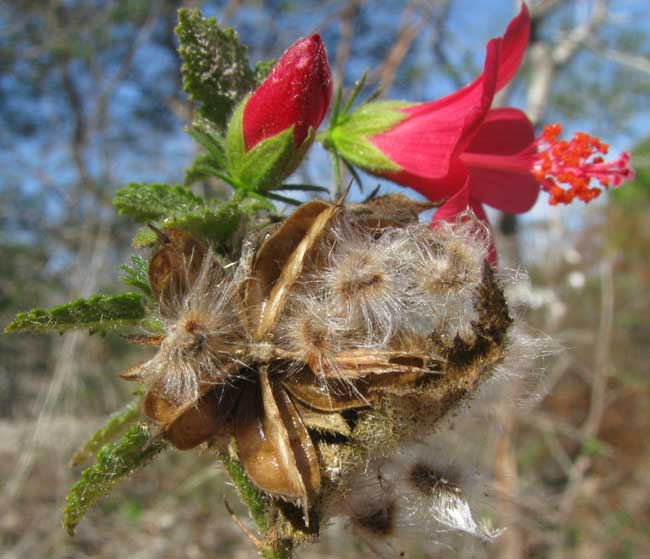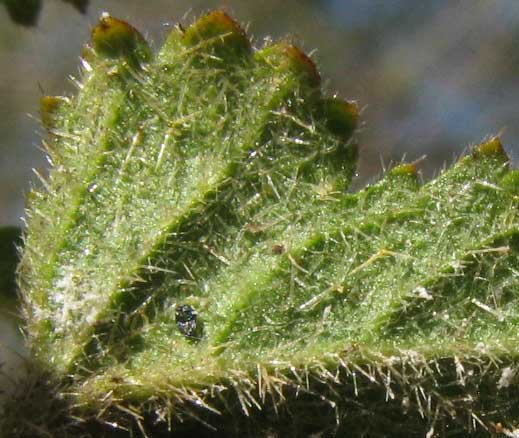Excerpts from Jim Conrad's
Naturalist Newsletter

from the February 6, 2011 Newsletter issued from Hacienda Chichen Resort beside Chichén Itzá Ruins, central Yucatán, MÉXICO; limestone bedrock, elevation ~39m (~128ft), ~N18.52°, ~W95.15°
POEPPIG'S ROSEMALLOW
Not far from the beige cotton, also in an abandoned lot in Pisté, stood a head-tall plant with bright red flowers 1-1/3 inch long (3.5cm) shown above.
With stamens arising from a cylinder surrounding the five-branched style like that, you probably recognize the plant as a member of the Hibiscus Family. In fact it's a member of the genus Hibiscus itself, HIBISCUS POEPPIGII, though its English name usually is given as Poeppig's Rosemallow. The species is limited to Mexico, Guatemala, The Antilles, and southern Florida. In Florida it's listed as endangered.
In the picture, the fuzzy items below the flowers are seeds affixed with long hairs, the hairs surely aiding in dissemination by wind. Seeing such seeds you can easily imagine how the cotton plant evolved its fiber-embedded seeds, and cotton also is a member of the Hibiscus Family. If you look closely you can also make out the Hibiscus's open capsule which, before it opened to release seeds, was shaped somewhat like a cotton plant's boll.
A field mark distinguishing Poeppig's Rosemallow from other Hibiscus species is that many of its vegetative parts are thickly invested with sharp, branched hairs -- "stellate" hairs -- as shown below:
